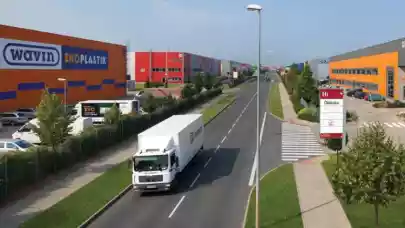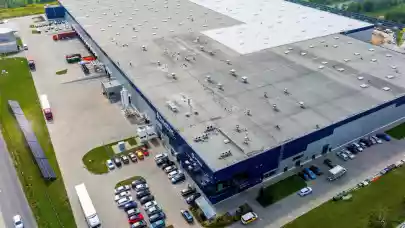
E-commerce makes a major leap registering important figures globally, reaching 4.28 trillion dollars in 2020, an increase of 27.6% compared to 2019, and the demand for logistics services is on the rise. Here are the latest trends in the e-commerce and logistics sectors as predicted by futurologist Sean Culey – strategist, transformation advisor, and external consultant to P3 Logistics Parks.
Europe’s e-Commerce adoption is growing at an incredibly fast rate, with an increase of 13.6% in 2019, and Amazon’s direct presence in the UK and Germany has no doubt driven a lot of this e-commerce growth as the two countries represent the largest markets on the continent. Central Europe is fast embracing e-commerce, with the Czech Republic the fastest-growing e-commerce market in Europe, with a market valued at €4.4 billion. Eastern Europe displays the lowest level of adoption, with less than 26% of shoppers using that channel in 2018, compared to over 85% in the UK. However, the region seems to be catching up fast as online retail sales in the Eastern European countries continue to grow at double-digit rates annually.
Europe is facing a growing demand for logistics services but a diminishing supply of logistics land. Much more, many cities are undertaking climate change initiatives that aim to reduce the number of vehicles in city centers, either by placing congestion charges on them or through pedestrianizing the center and building cycle lanes, which creates an ever-increasing demand for the rapid, almost 24/7 delivery of goods and services, but limited space to store the goods, an inability to demolish and rebuild, and an already overloaded road infrastructure system. To meet this new wave, logistics needs change and the answer could stay in repurposing the past – in this case, the partial or even complete transformation of some commercial buildings.
With goods transport making up a large part of the traffic volume in these metropolitan areas, a tube-logistics network could be the answer for several European countries. A number of new projects across Europe are going back and revisiting the idea. Major European cities can benefit from such perks by repurposing disused underground/metro lines or expanding the disused pneumatic tube lines and could create a 24/7 logistics pipeline that links together the edge-of-city fulfillment centers with a network of urban warehouses designed to service the local community. Perhaps the biggest underground freight mega-project is the Cargo sous terrain (CST), which will connect the major centers of Switzerland starting 2031.
The European supply chain PAL has, therefore, the potential to become reality. Through a mix of state-of-the-art technologies such as AI, robotics, or autonomous vehicles, together with refurbished and connected infrastructure - disused properties, underground car parks, tunnels, or pneumatic pipelines - countries such as Germany, which show significant growth prospects in the e-commerce segment, will be experiencing soon an increasing pressure on behalf of end consumers to offer fast and cost-effective delivery solutions.



